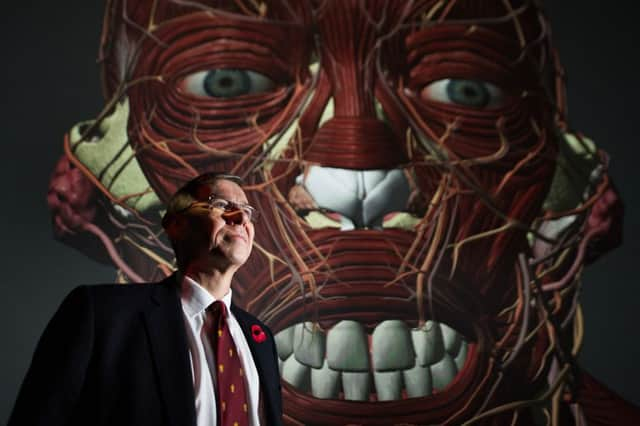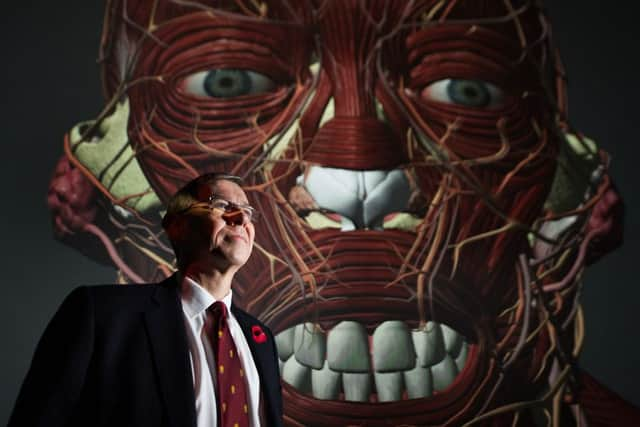Video: Groundbreaking 3D skeleton model unveiled


The ground-breaking project is being created by a team of international experts at the Glasgow School of Art’s Digital Design Studio (DDS) in collaboration with the Royal College of Surgeons of Edinburgh (RCSE).
The “3D Definitive Human” will allow medical students to see inside a body and understand its working without having to rely on donated cadavers.
Advertisement
Hide AdAdvertisement
Hide AdSo far only the skeleton of the highly detailed visual structure has been completed, with the full body due to be finished by 2017.


The structure will expand on the completed head and neck sections, which were unveiled in 2013, and are already being used by dental students across Scotland.
The first images of the 3D human were unveiled yesterday at the DDS in Pacific Quay, Glasgow, to mark the RCSE officially joining the project.
“There are many other anatomical structures out there but none with the detail, technical accuracy and the potential of this,” said RCSE president Ian Ritchie.
“From an educational point of view, the 3D nature of it makes it much more intuitive for learning. I believe this is something that will be of use to medical students all the way through to consultants reaching the end of their careers.
“Anatomy hasn’t changed for thousands of years but this is a different approach and it’s one we believe will be very useful for surgeons.
“It’s all very well when you look at the relationship of structures on a flat page in an anatomy text book, but this is filling it out and making it 3D.”
Many of the team responsible for creating the 3D Definitive Human have backgrounds in video game design. Lead artist Danny Buksh said: “If you think of us as the builders – we have the tools to build the house, but it’s the anatomists who are telling us where to place everything.
Advertisement
Hide AdAdvertisement
Hide Ad“We are using a variety of data capture methods, such as MRI and CT scans, to ensure the model is as accurate as possible.
“We have a team of anatomists to assist us. The model shown today was based on CT data, and we then create the extra level of detail.”